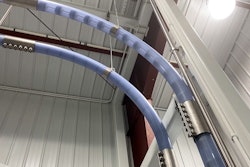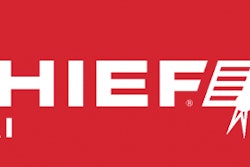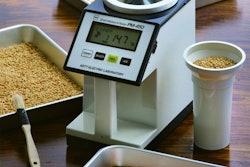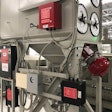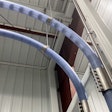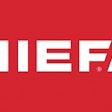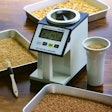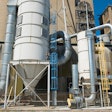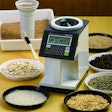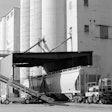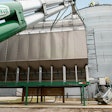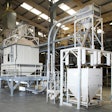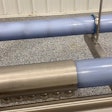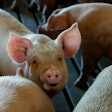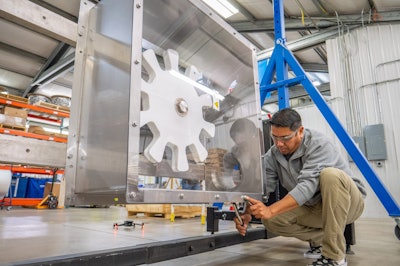
For those unable to visit the test facility in person, Cablevey now offers the ability to view and respond to product testing live in a “virtual visit” with a link to realtime video and a Zoom meeting format, an option developed during the COVID-19 pandemic.
With this technology, the tubular cable conveyor manufacturer can host both in-person and virtual visits simultaneously, which is helpful when larger work groups such as quality assurance teams have an interest in evaluating the conveyor.
“In one recent product test, a team of four visited our facility in person while 12 others watched virtually,” says Berning.
For those who wish to experience the world-class facility in greater detail, Cablevey has created a 360-degree immersivevirtual tour of its product test center.
Even when people love the look of a car or SUV, most would not complete a purchase before a test drive to confirm how the vehicle performs on the road.
Similarly, today an increasing number of feed processors are realizing the importance of “test driving”conveyor equipmentat OEM test facilities, which use their actual product to ensure the equipment meets processor quality, flow and cleaning requirements before they make the purchase.
In response, some OEMs have invested in state-of-the-art test facilities that allow animal feed processors to run product on the same type of equipment they are considering for purchase, while benefitting from expert consultation to optimize their process.
“We encourage feed processors to test their products [at our facility] and observe the results to ensure it meets their needs. They can ask questions in real time. They can test for fines or degradation. They can see for themselves how the product flows in the conveyor and how easy it is to clean,” says Larry Van Zee, executive VP, retired atCablevey Conveyors.
Product test center helps evaluate options
At its full-service product test center in Oskaloosa, Iowa, the OEM has tested more than 1,900 products, including feed, beans, rice, grains, cereals and more, for some of the largest global brands. All products are run through atubular disc and cable conveying systemto observe the effects and fine-tune the results.
According to Scott Berning, Cablevey’s product testing manager, there are multiple reasons feed processors decide to visit the test center.
“Customers may have products that we know will run well on tubular cable conveyors, but they want to see it in operation with their own eyes,” says Berning. “They want to ensure the product will run properly, and their quality department typically checks as part of their due diligence before purchasing equipment.”
Berning adds when Cablevey’s applications department designs and quotes a conveyor and the manufacturer lacks sufficient experience conveying a specific product, the email quote states it is “pending successful product testing.”
Some feed processors want to evaluate tubular cable conveyors against other conveying options they may also be considering, such as bucket elevators or chain conveyors. Others are already familiar with tubular cable conveyors based on experience and want to show their managers that a similar solution could be implemented at their current facility.
Once the feed processor is at the site, Cablevey product specialists and engineers typically consult with the customer to determine their specific goals and issues to be resolved. From this, they can proceed to design a conveyor with a set of features that addresses specific challenges.
“Our technicians and engineers can diagnose and prescribe a solution whether the concern is breakage, temperature, stickiness, abrasiveness or other issues,” says Berning. He notes that when feed processors test products at the facility, they are provided full documentation of the results, including a detailed report with video and recommendations.
The goal is to keep feed intact and avoid damage
According to Berning, testing for product fragility and damage is usually the primary concern of processors.
“No matter the product, feed processors want to keep their product intact and avoid damage during conveying,” says Berning.
He points out that tubular drag cable conveyors excel at reducing product damage since the units gently move product through a sealed tube using a coated, flexible stainless-steel drag cable pulled through on a loop. Solid circular discs (flights) are attached to the cable, which push the product through the tube without the use of air.
这些输送机运输精致、准确的提单ends for a wide variety of food types, and up to 2,000 cubic feet per hour of materials in versatile layouts and configurations.
Still, quality assurance checks can be essential for processors, even those transporting products that seem hard to damage.
Reducing product loss and maintenance is also important to feed processors
“Processors want to place their material in an inlet and then have all of it emerge from the discharge with minimal losses,” he says. Since tubular cable conveyors are sealed from end-to-end with product traveling one way in enclosed tubes, there is essentially no product loss and no issue with carry-back.”
Ease of cleaning the conveyor is also a top priority of feed processors. Surprisingly, many processors visit the facility to witness how easily the conveyor can be cleaned.
“People come here from across the United States just to watch me perform a conveyor wet-clean and washdown even though it is something I have to do every day,” says Berning.
Traditional alternatives like screw conveyors can be difficult to clean and require time-consuming disassembly, as well as some heavy lifting after each product changeover.
“One processor told me that it took six of his technicians about eight hours to clean their screw conveyor system. They had to pull a big auger out of the screw conveyor, which was dangerous to handle,” says Berning.
Tubular drag cable conveyor systems offer easier, safer options for dry and wet tube conveyor cleaning. Equipment such as brush boxes, urethane wipers, air knives, inline sponges, and inline bristle brushes can facilitate multi-step, essentially automated Clean-In-Place (CIP) wet cleaning.
The wet cleaning process internally cleans the cable conveyor tube in several steps, starting with a water rinse followed by foaming agent, a sanitizing rinse, and a final water rinse. Once the system is thoroughly flushed out, drying is achieved by attaching urethane wipers to the tubular conveyor’s discs, which “act like a squeegee” to remove any residual water.






